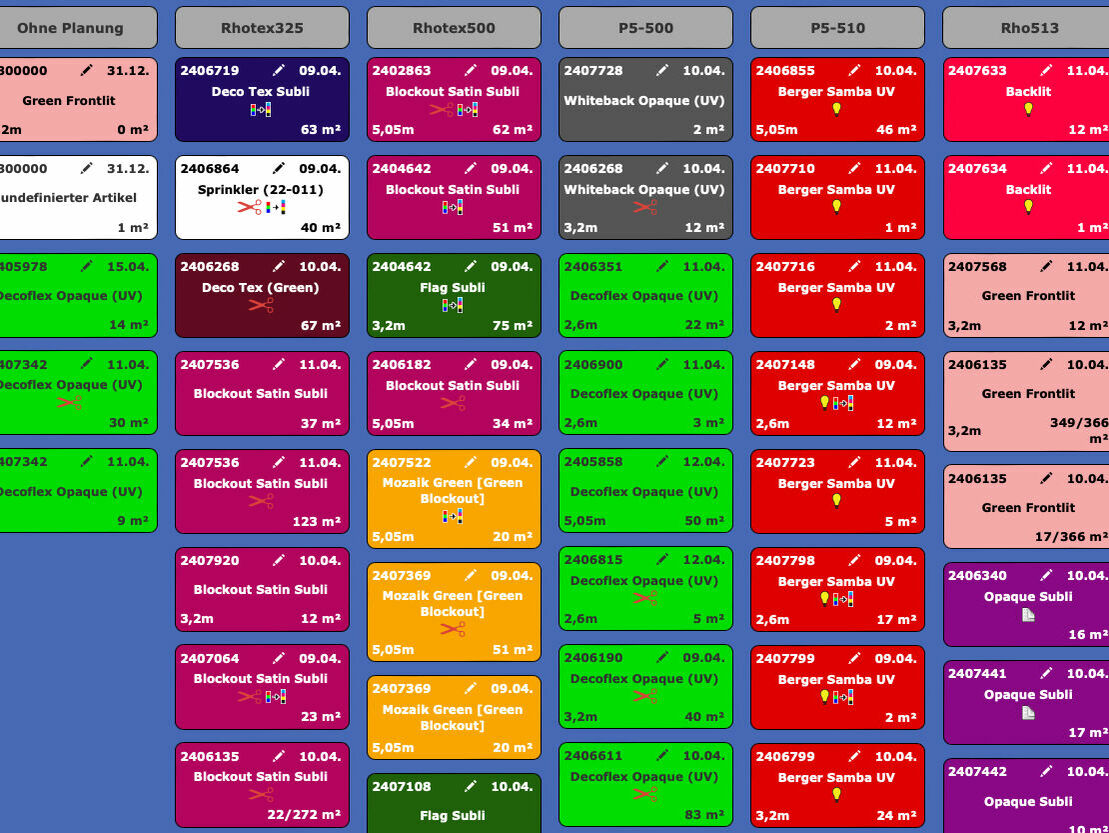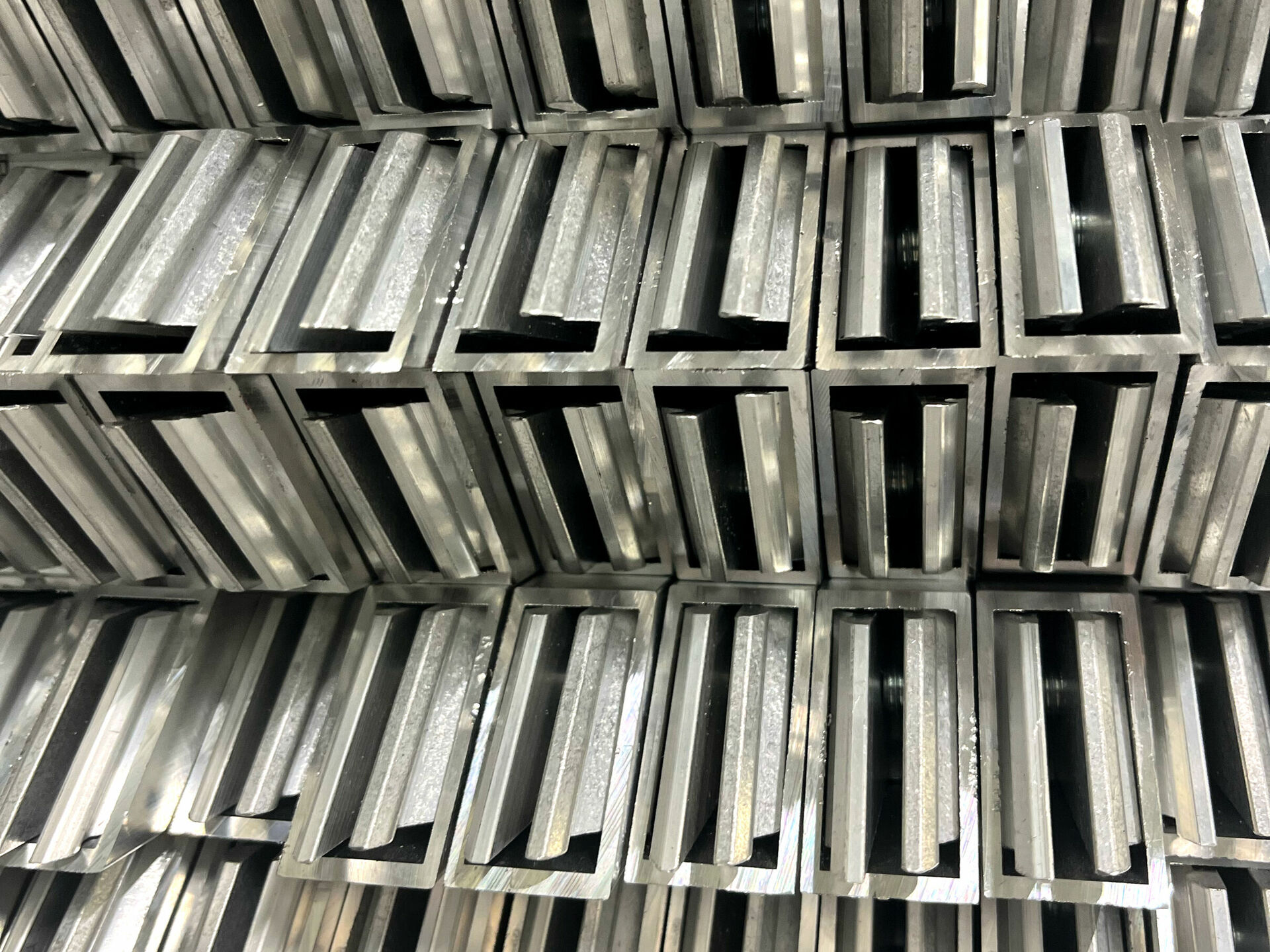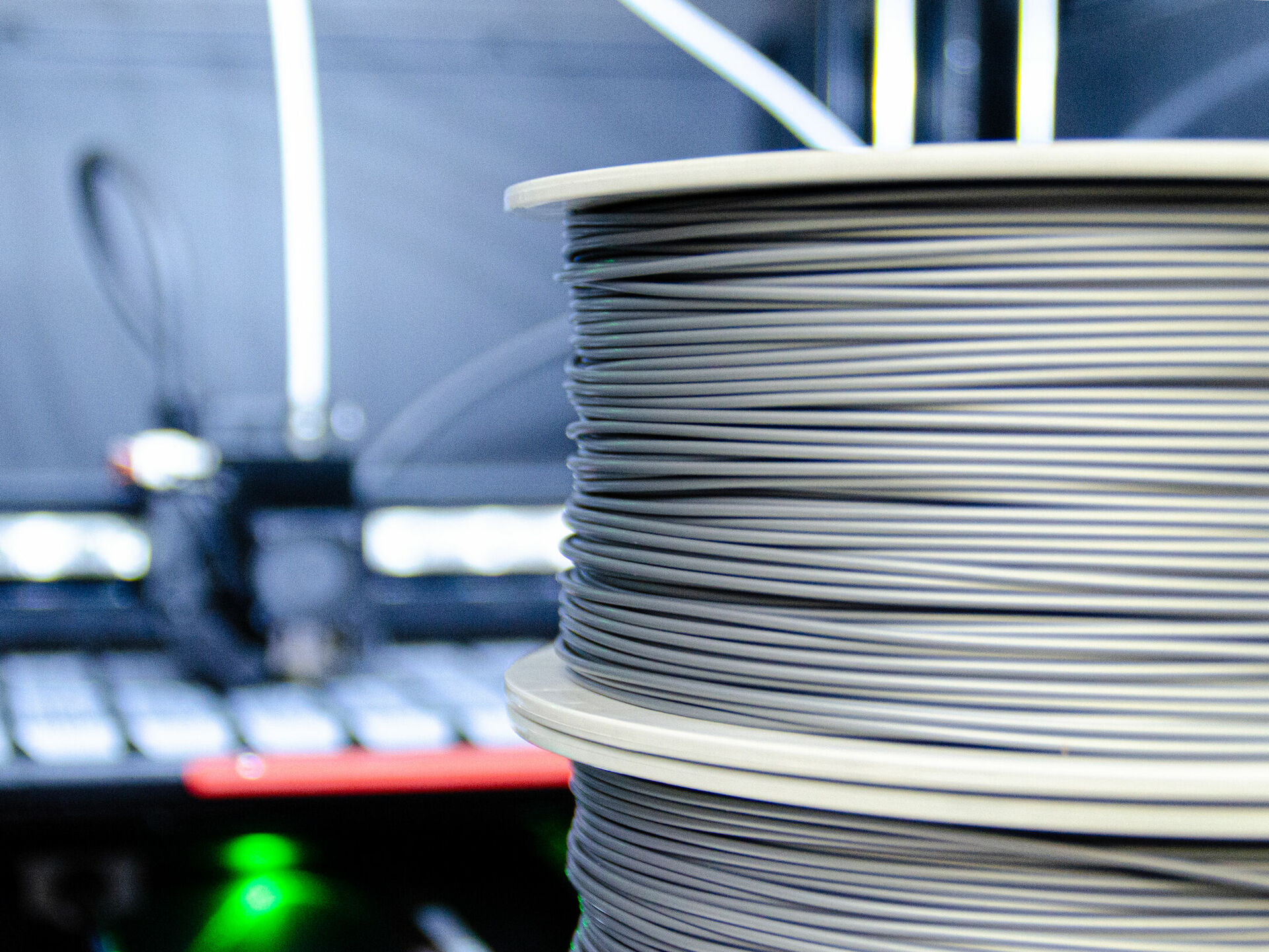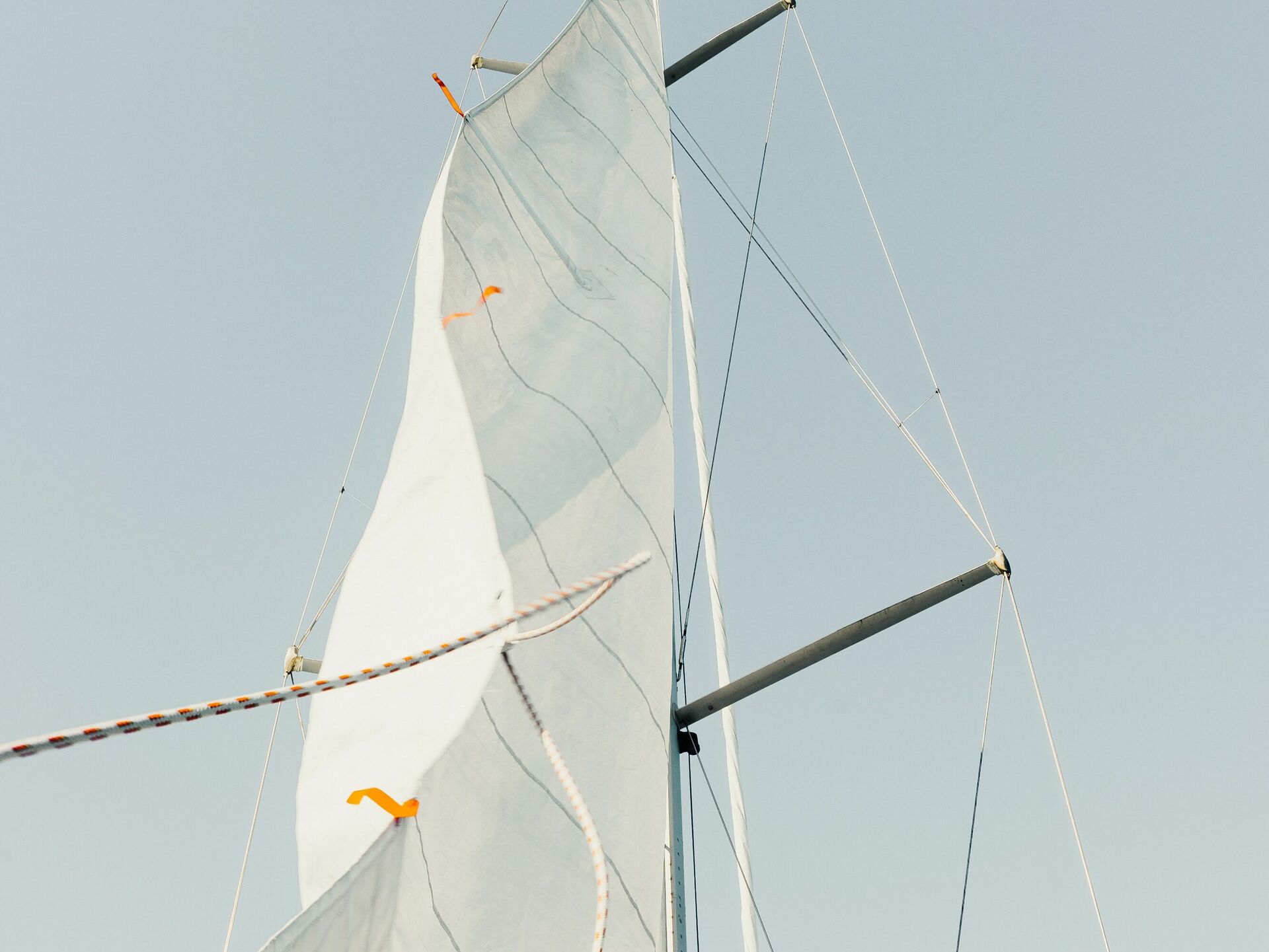Optimized processes and custom-made machines at Procedes
At Procedes in Lemwerder, ready-to-wear takes on a whole new meaning. While it’s not about haute couture or Paris Fashion Week, our largest area of work is built on a foundation of innovative spirit and meticulously perfected craftsmanship. For over 30 years, Jacek Treffler has been the master of cutters and sewing machines at Procedes. Today, he offers a behind-the-scenes look at the tailoring department, where precision and expertise come together to produce high-quality results.
“I start at six in the morning and schedule the editors,” explains Jacek. “The jobs are created and color-coded in our internal project management tool, so the cutters know exactly where to begin.” Most tasks involve large-format textile banners for advertising, trade fair stands, or interior design projects. These banners are printed on approximately 100 different types of textiles, each with unique properties such as backlighting, transparency, acoustic functionality, or outdoor resistance. Special requests are also welcome and reviewed for feasibility.
Every project begins with specialized tools, individual calibration, and expert craftsmanship. “We create all our cut files ourselves,” says Jacek. “Before anything goes to print, we rigorously test new fabrics for quality, dimensional accuracy, and printability. Nothing is left to chance.”
The cut files, or “cut contours,” are prepared in the pre-press stage. These vector paths contain exact dimensions, material stretch behavior, and any required cutouts, along with allowances for finishing.
This information is processed in the RIP software, which automatically generates the cut files. Once the print is complete, these files are sent to the cutting tables, ensuring automated, precise cutting.
How-to Konfektion
Before production:
- New materials are tested for print quality and dimensional accuracy
- Relevant data is stored and shared across departments
During production:
- Cutters trim textiles based on the prepared cut files
- Seamstresses hem the textiles and attach piping for fastening
- Eyelets are inserted into textiles when required
- Finished products are rolled onto cardboard cores for shipping or folded to save space, reducing the need for cores and improving sustainability
At this point, a little digression on the subject of piping (you'll need it later, I promise!):
Piping, or edge reinforcement, is essential for maintaining a banner’s shape and tension. Procedes uses various types of piping depending on the application. The most common is flat keder, a hard rubber lip sewn onto the textile’s edge. This keeps the fabric taut within our frame systems. For other profiles, round piping is encased in a hemstitch and inserted into aluminum profiles. Special cases, like fluffy textiles, require overlock sewing machines to ensure the piping remains secure.
But now back to Mr. Treffler in the production hall: "When the cutters are finished with the first cuts, I take them to the seamstresses and distribute them. We have built specially adapted transport trolleys for this. The cuts are sorted by day on the shelves, so I put the ones for today on the trolley and take them to the sewing machines. I like to do this personally, because then I always have an overview."
Flexibility and expertise at the core
The remaining employees are then also assigned for the day. At Procedes, it is particularly important that all employees master the entire work area: “We are very flexible, because all employees can do everything - whether hemstitching, flat welting or anything else,” emphasizes Jacek Treffler.
When the crew is working and all the machines are running, Jacek Treffler is primarily responsible for quality monitoring. In 30 years at Procedes, he has seen almost everything and knows his way around - no faulty product gets past his quality check! However, he not only monitors and perfects the products, but also the processes at Procedes: "We recently discovered that our system is not quite ideal. We noticed that the fabrics needed to run through faster. As a result, we halved a running area in our hall and bought new sewing machines. That is one of Procedes' great strengths: If the arguments for it are right, then new and better equipment is purchased." This keeps production quality and speed at a consistently high level.
The machines used in the production department are not off-the-shelf either. All machines are individually tailored to Procedes' needs and calibrated - in some cases in-house. "Our sewing machines are connected to a computer so that they can be individually adapted to each employee, but all our products are still sewn with the same settings. Each textile processed by Procedes has its own adjustment in the machine so that it is neither too tight nor too loose. Ultimately, this only works by hand." The settings and information about the textile or product can be found on a scannable label. This label can be used to assign the product throughout the entire manufacturing process.
All textiles are tested down to the last detail
But where does this information actually come from? This is also manual work at Procedes, as Jacek Treffler explains. "We developed all the machine settings ourselves. Every new textile is first tested for weeks, for quality, for dimensional accuracy, how does the color hold? No new material goes on sale without this test procedure. It takes a lot of experience and the passion to play with testing small details in order to assess everything correctly - that's Procedes know-how." This is important not least because almost every textile made up by Procedes ends up being stretched in an aluminum frame. And the only way to find out how the material behaves under tension is to try it out. This is particularly relevant for backlit textiles: "Textiles for backlighting are reduced by a percentage in the Raster Image Processor (RIP) in the pre-press stage. This means that if I have a 1x1 meter frame, the print is 2 millimetres smaller, i.e. 99.98 cm. The goal is always a wrinkle-free print product in the aluminum frame. So the two millimetre difference is exactly the tension I need to get the textile smooth," explains Jacek Treffler. "At Procedes, we work with special programs for the cutting dimensions, in which all textiles are stored. Behind this is a database in which all these deductions are recorded."
Another little digression, this time on the subject of the Raster Image Processor (forgive us, yes? We just love our job!):
The RIP software is the heart of print data preparation and ensures that the prepared graphic data is translated into a machine language that the printing press can understand.
In detail, this means the following: The data is converted into high-resolution bitmaps (file format of a pixel graphic). They are separated into the four color separations cyan, yellow, magenta and black and then sent to the printing presses as individual separations. There they are reassembled and processed as a single image file. However, the machine language does not leave it at a simple separation, but adds our individual color management with the contained color information and compares it with the color values contained in the print file.
Back to the sewing tables: this is where the piping, a plastic edge reinforcement, is sewn on. Procedes works with round and flat piping, depending on the product. And finds a solution for almost every textile: "For fluffy textiles, for example, we have an overlock sewing machine for trimming with flat piping to prevent the piping from tearing. This machine was specially made for Procedes." The piping also means that individual solutions are needed for shipping the products, explains Jacek Treffler. "The core of rolled fabrics is filled with recyclable foam film to prevent creases. This film compensates for the flat piping, without it the roll collapses."
Even many very small processes are optimized down to the smallest detail at Procedes: For example, the cardboard cores on which the banners are wrapped for dispatch can be individually cut to size right next to the sewing tables. These sewing tables are also specially made for Procedes. And the machines used to insert the eyelets into the banners are also optimized for the Procedes workflows.
Jacek Treffler points to a large screen on the wall. "Here we can always see how many banners we have to create on any given day and how far we've already come. That way we always have an overview." He laughs. “And, of course, it's also a little competition between the ready-made, printing and metalworking department .”
A competition that works: Fully staffed, Procedes ready-made department produces 4,500 square meters of textiles per day,delivering standout and branded products at trade fairs, POS and other venues around the world.

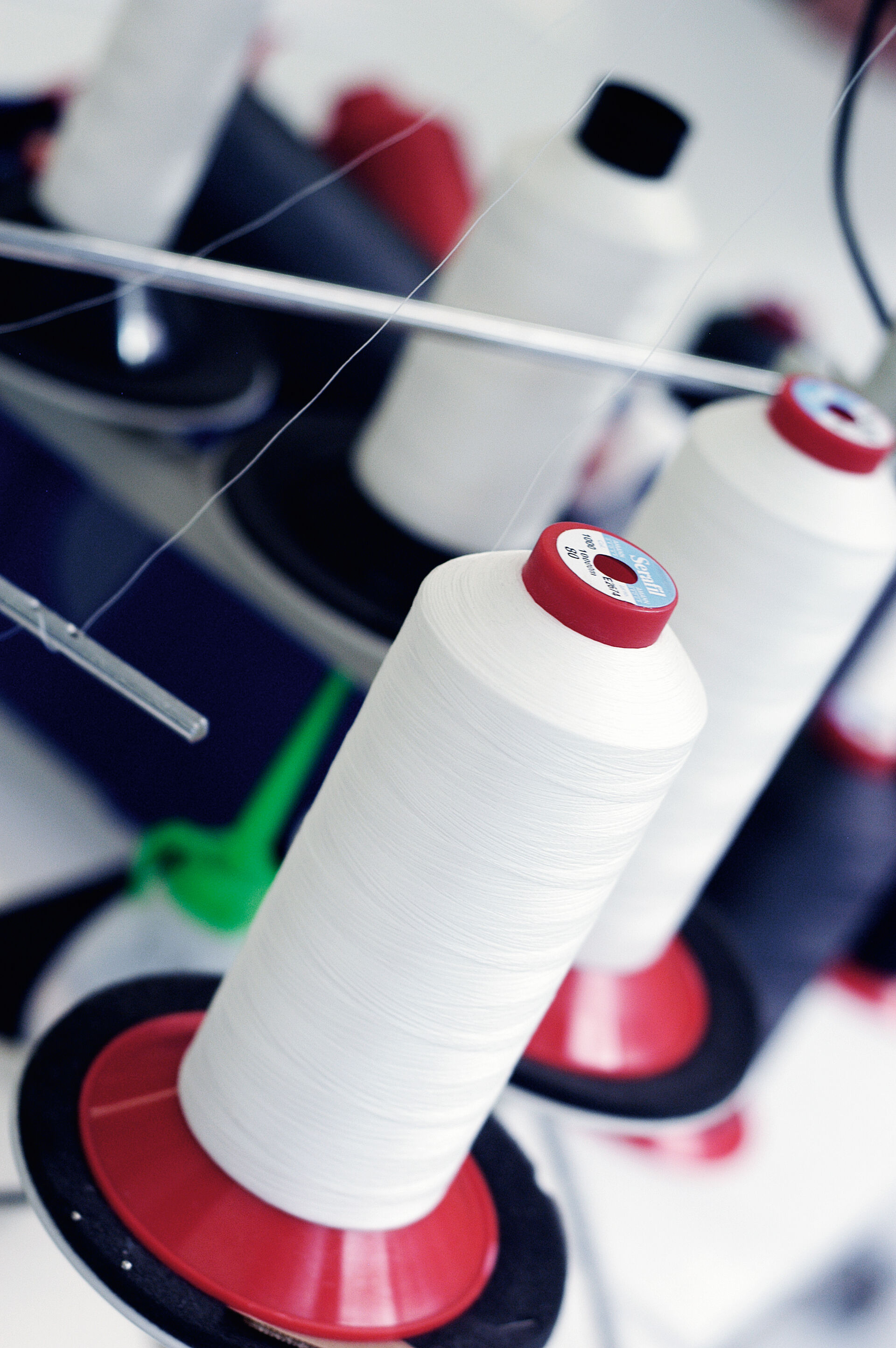

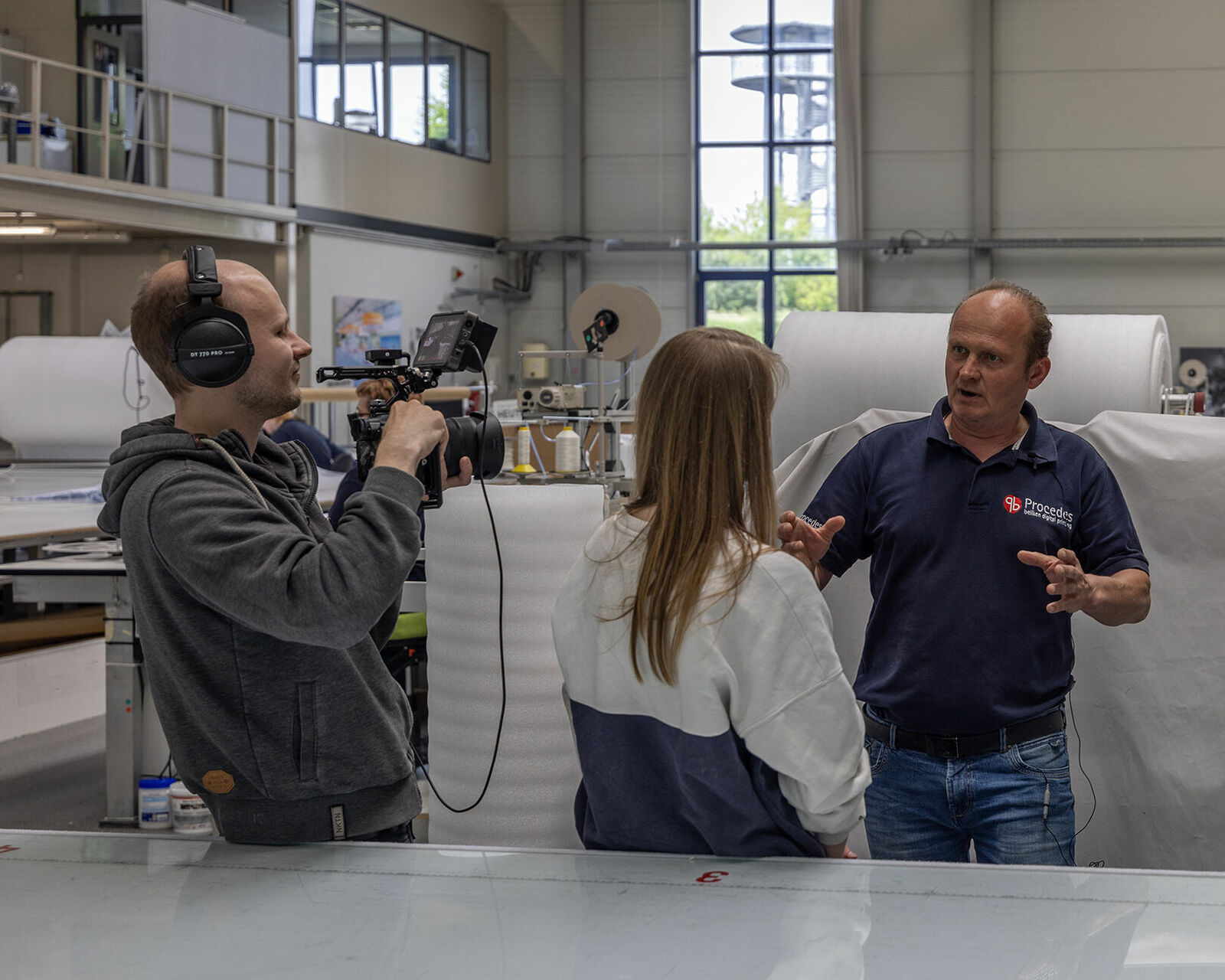
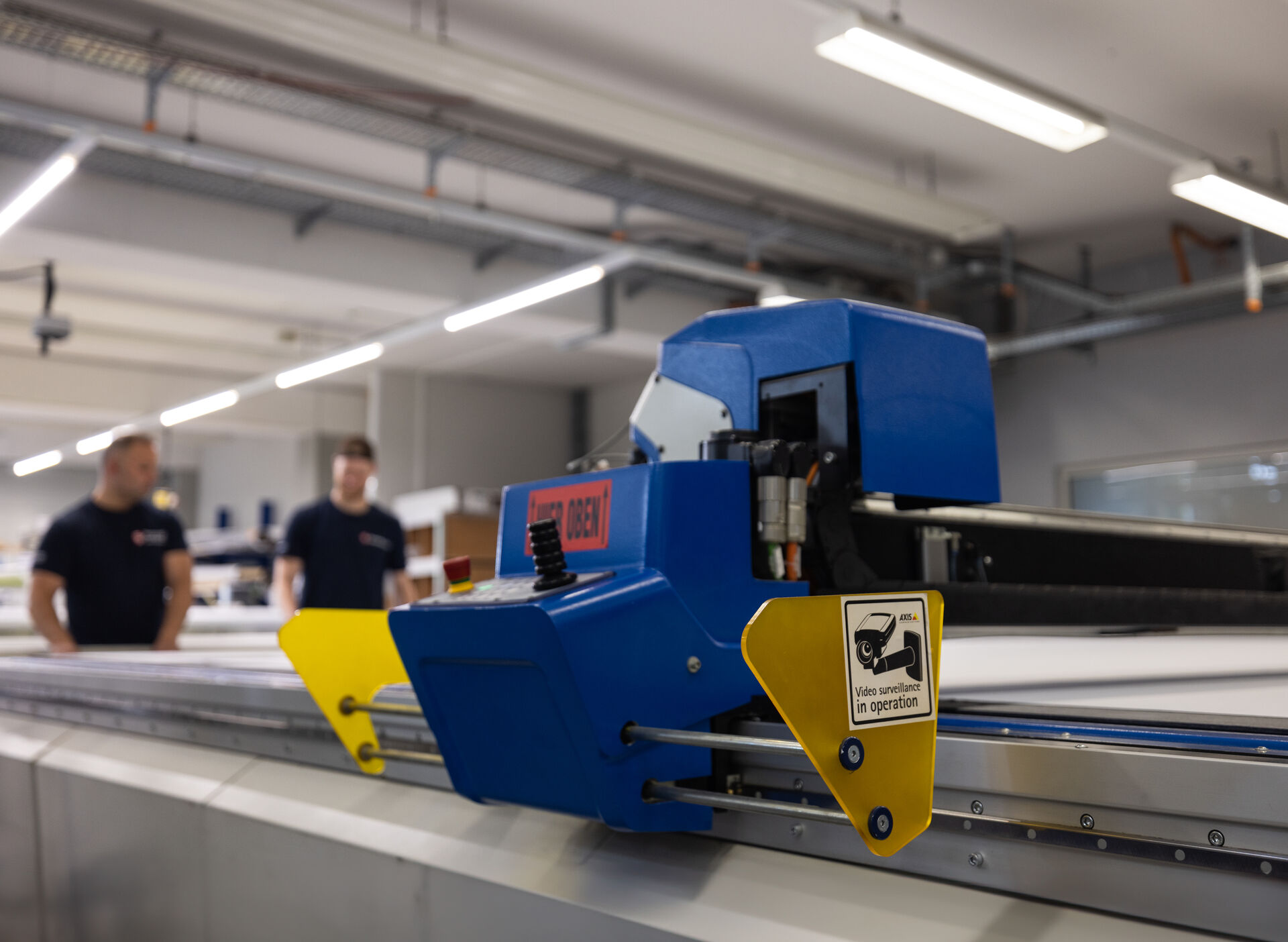
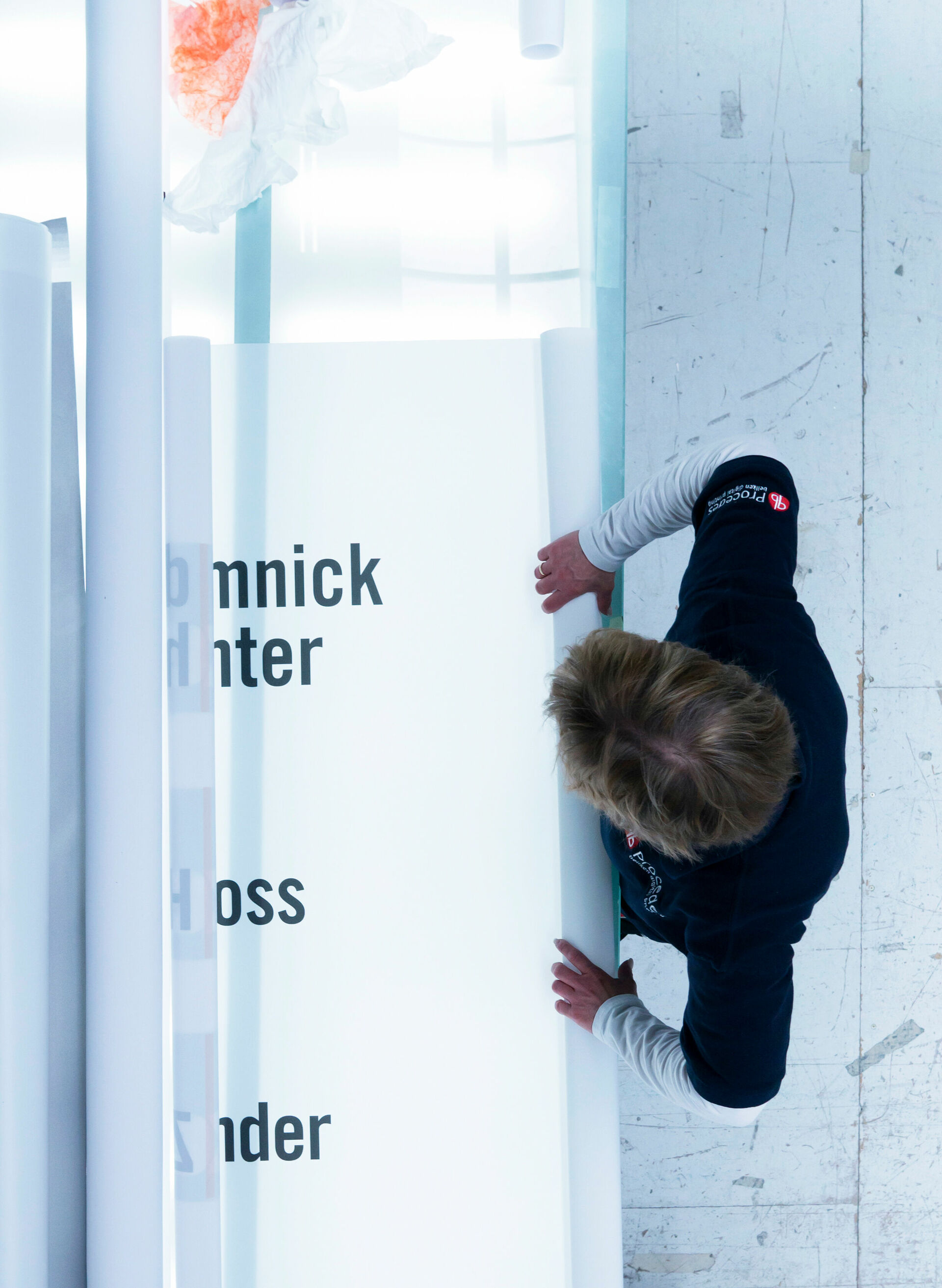
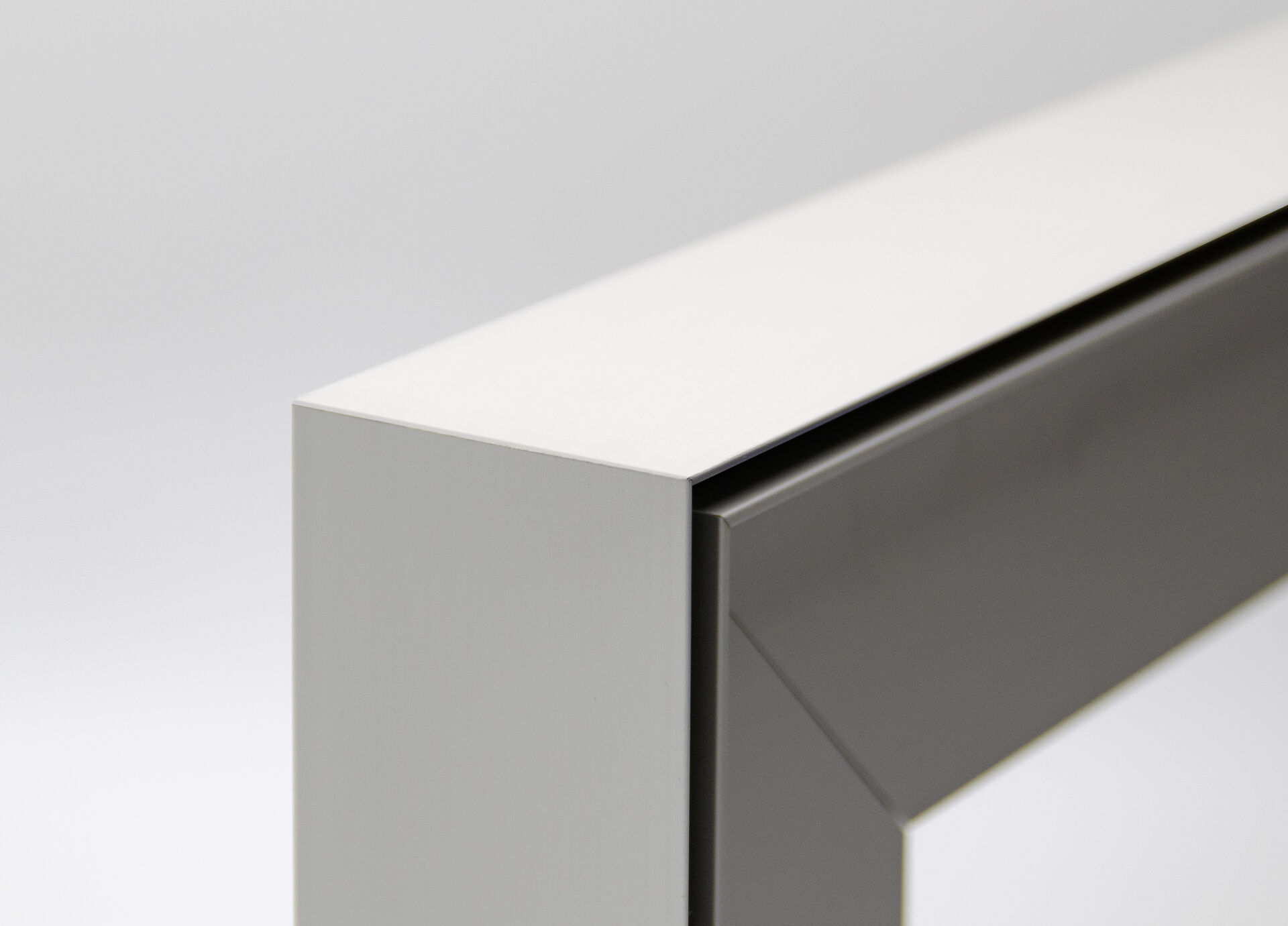
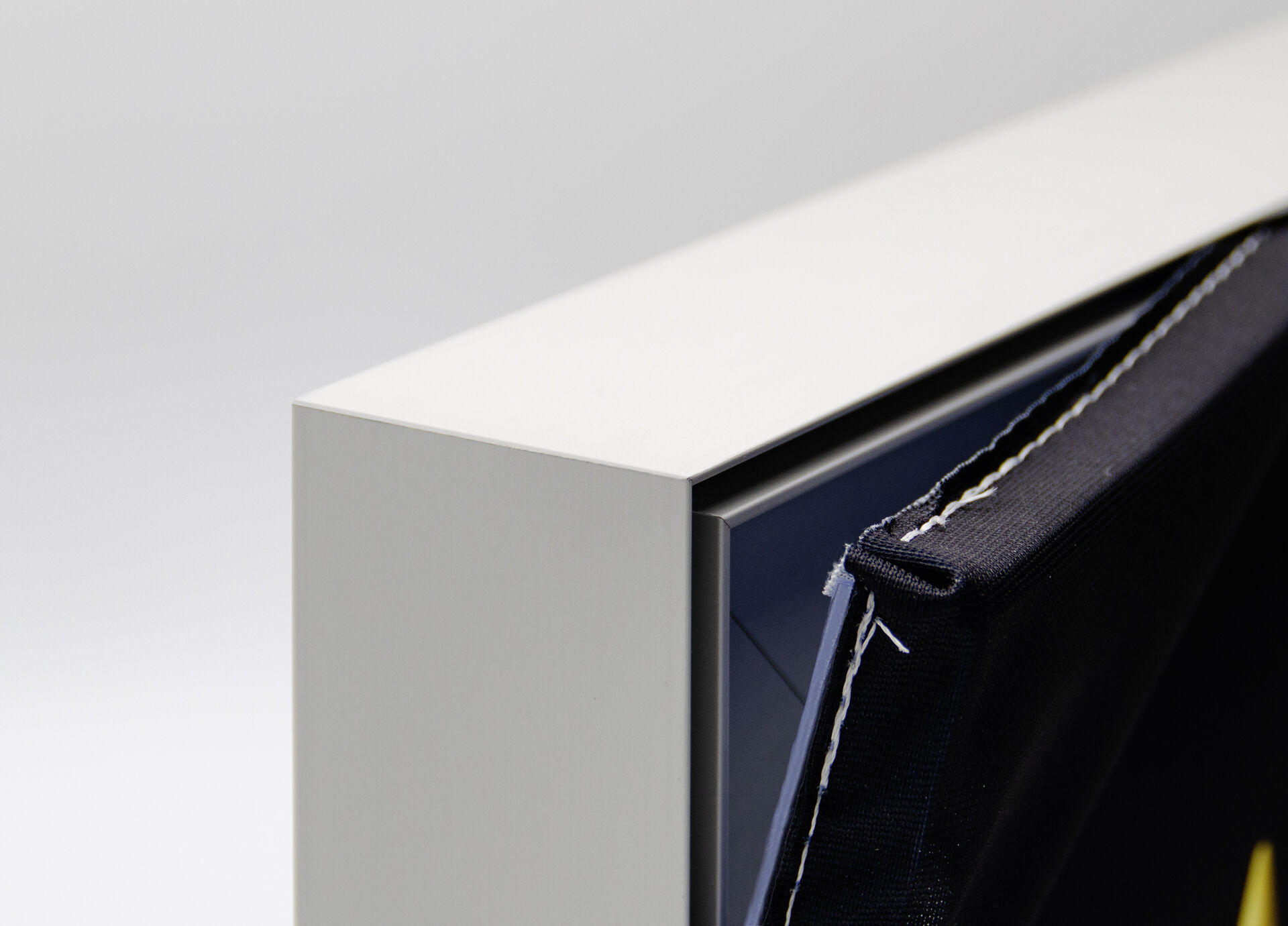
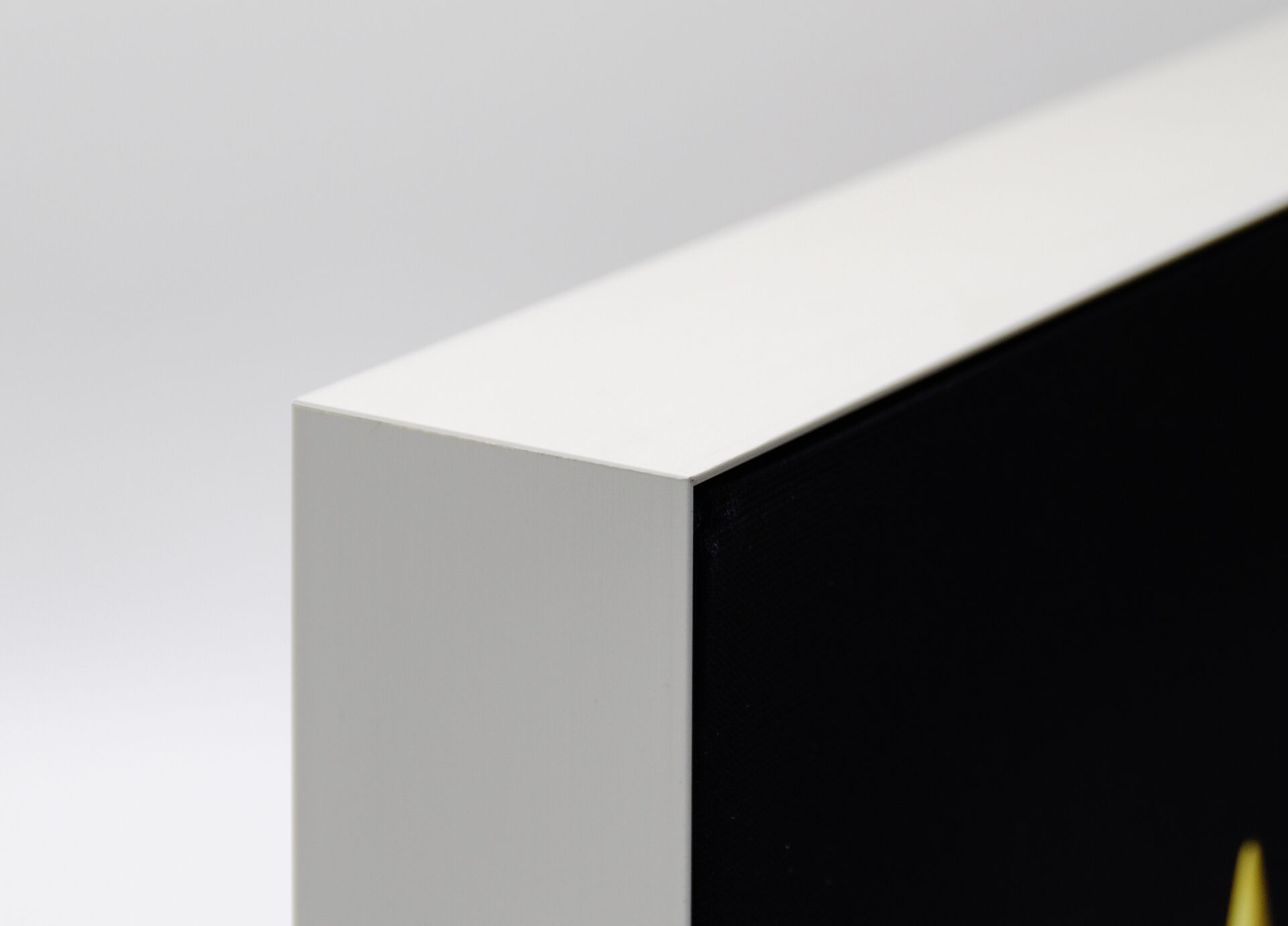
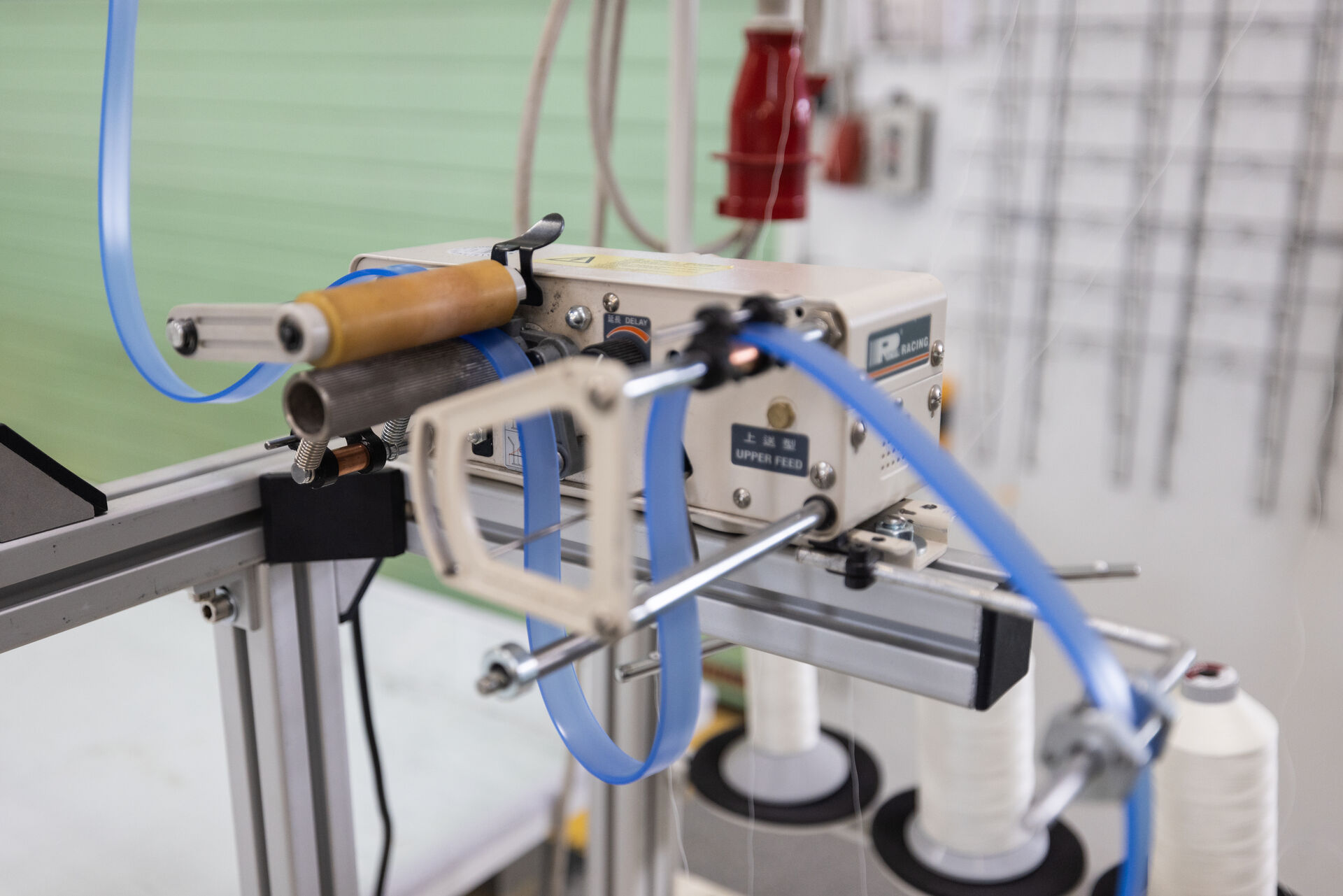
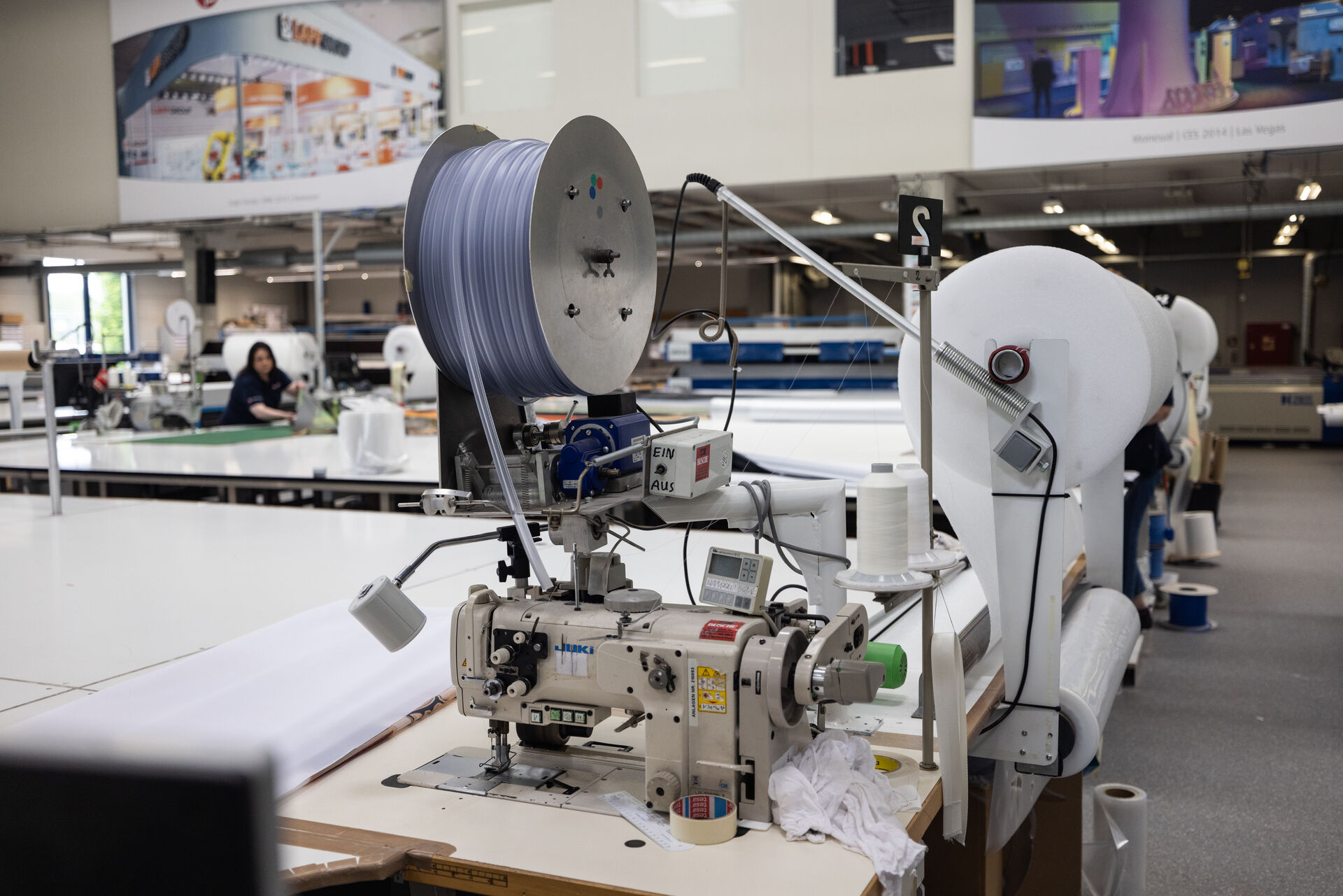
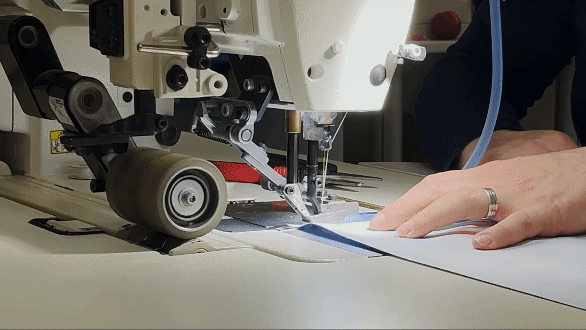
![RIP-Station [Translate to English:] Ansicht einer Frau am Computer mit Drucksoftware](/fileadmin/_processed_/5/0/csm_rip_station_aa1d3a4b19.jpg)
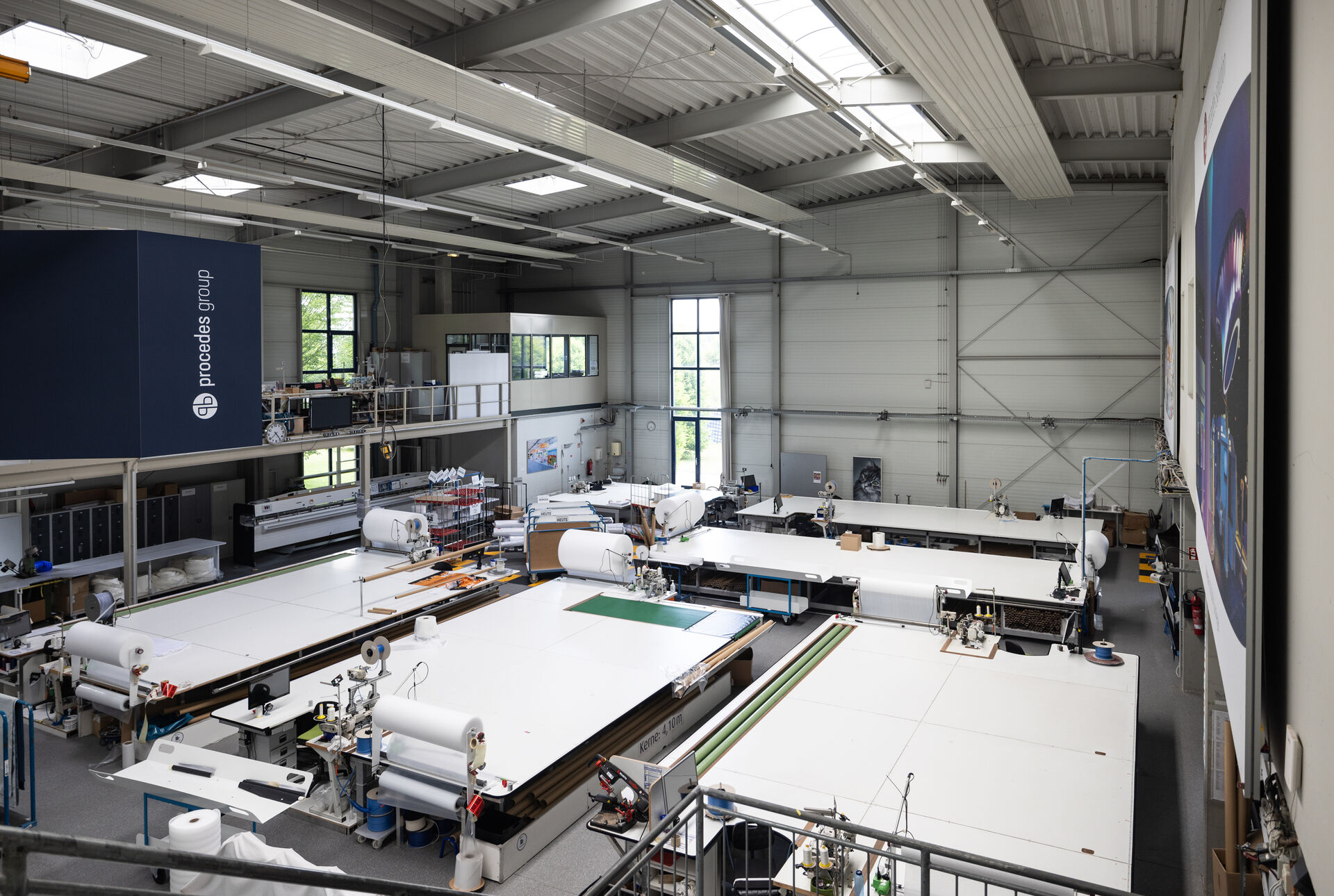
![[Translate to English:] Round textile sculptures in white hang from the ceiling.](/fileadmin/_processed_/f/7/csm_cta-procedes_b2c2ad64de.jpg)

